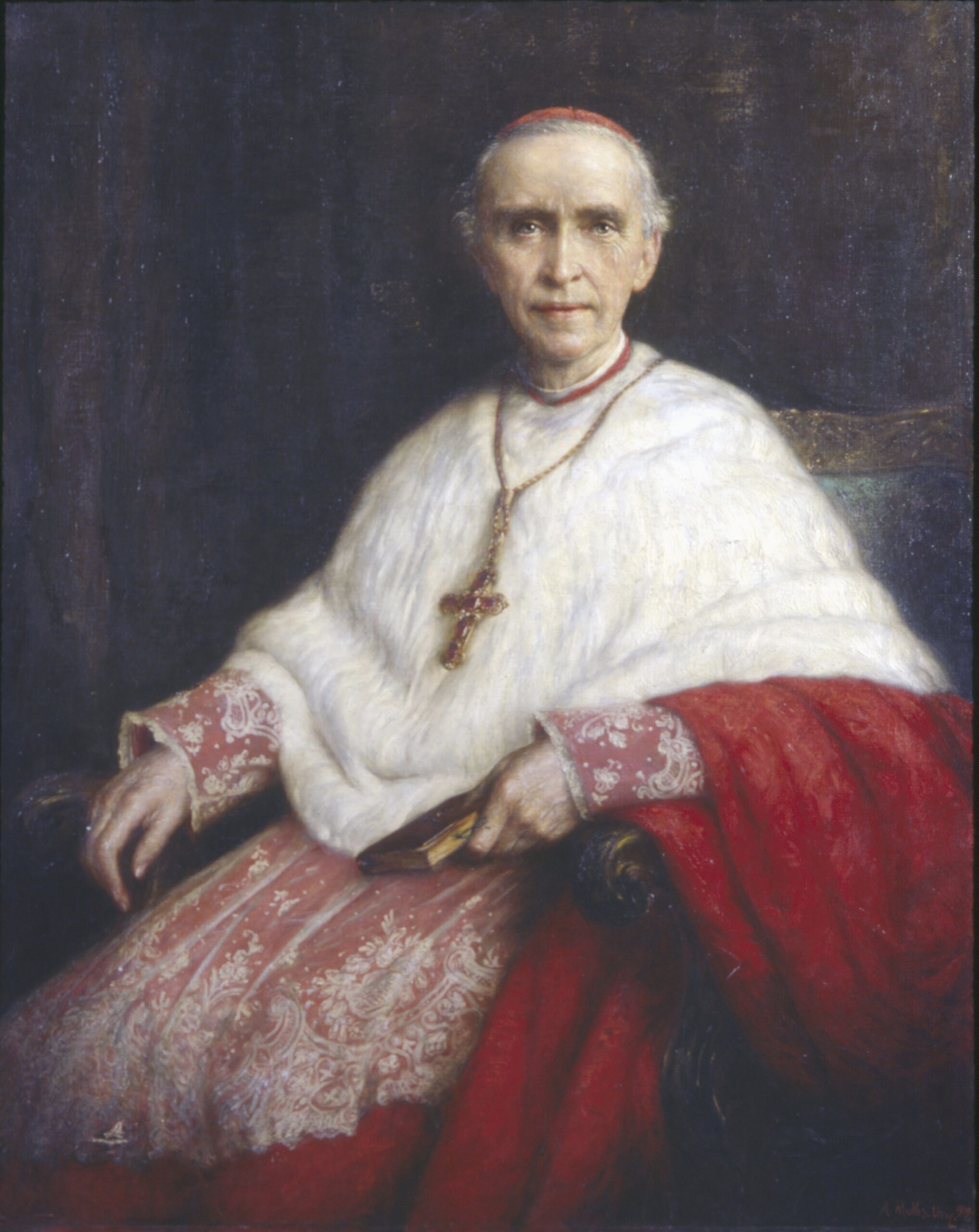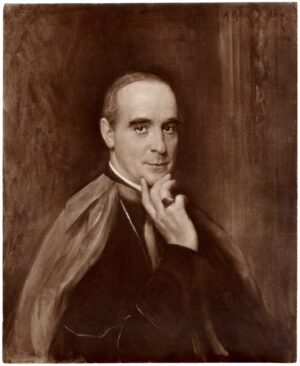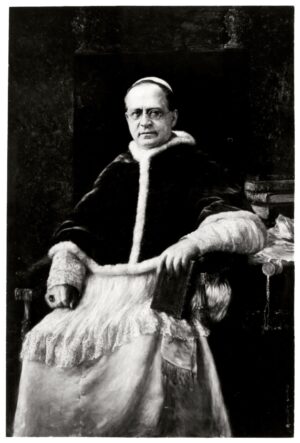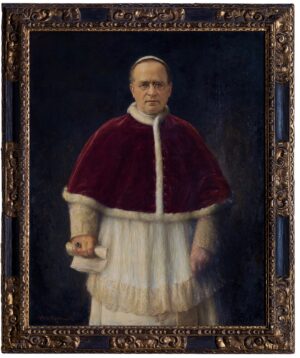MERCIER, Desiré Cardinal
Description:
Three-quarter length, seated wearing a cape of white fur over his robes. Oil on canvas, 50” x 40” (127 x 101.6 cm), signed and dated lower right ‘A. Muller Ury 1919’. In pencil on the stretcher ‘Cardinal Mercier’ in the artist’s hand.
Location:
Stiftung Adolfo Muller-Ury, Hospental, Switzerland.
Provenance:
The picture remained in the artist’s studio until his death in 1947 and was recorded by Jessica Dragonette in her autobiography Faith is a Song (New York, 1951), p. 301, as follows: ‘His brother came across the ocean to take back to Switzerland certain pictures like the magnificent Cardinal Mercier.’
Exhibitions:
The portrait was exhibited at a gallery at 559, Fifth Avenue, New York in the Autumn of 1919.
The portrait was exhibited at a Member’s exhibition, LOTOS CLUB, New York, February 1921
WILDENSTEIN & CO. INC., 19, East 64th Street, New York, April 20 – May 4, 1937, No. 2.
FRENCH & CO. INC., 210, East 57th Street, New York, April 21 – May 3, 1947, No.5.
Bibliography:
American Art News, Vol. 19, No. 20, February 26th, New York, p. 3
New York Mirror, April 21, 1937
New York Herald Tribune, April 25, 1937
New York Times, April 25, 1937
Désiré Félicien François Joseph Mercier (1851-1926), Cardinal Archbishop of Malines was Primate of Belgium.
Bibliography of the sitter:
Henry Louis Dubly, The Life of Cardinal Mercier, Primate of Belgium (trans. Herbert Wilson), 1928
John Allyne Gade, The Life of Cardinal Mercier, 1934
Eduoard Beauduin, Le Cardinal Mercier, 1966
—
The following letter dated July 9, 1919, written from the Catholic University in Washington D.C., in the artist’s papers, gives full information about the origins of the picture:
‘Dear Mr. Muller-Ury:
I have your letter of July 6, and am greatly pleased to know that you have decided to stay and paint Cardinal Mercier. I am most grateful to you for your intention to donate the portrait to the University in case no one can be found who will meet the expense. I shall ask Our Lord earnestly to move your friend in St. Paul to take a practical interest in the painting and meet your wishes in this regard. I shall see Cardinal Gibbons before long and shall ask him to be helpful to you in the way of obtaining some sittings from Cardinal Mercier when he arrives. I do not doubt that will be the case, as I understand he is to be the Cardinal’s personal guest in this country. Our last news was that he would arrive here in the latter half of September, but since positive statements have been tele-graphed across that he would not come here until October.
I have not forgotten your very kind and encouraging attitude towards the National Shrine. Thank God, everything is going along nicely now, inspite of the confusion of so many appeals all over. We had pretty hot weather recently, but it is very pleasant now.
With best wishes, I remain,
Very sincerely yours,
Thomas J. Shahan, Rector.’
Mentioned in several editions of Dictionaire Benezit as being at the Catholic University in Washington D.C., and this may be based upon the misunderstanding of an entry in The New International Encyclopedia: Supplement Vol. 2 (1930) where it is stated the picture was for the Catholic University. However, in the light of the letter quoted above it is possible that an autograph original has been lost or destroyed by the Catholic University.
An anonymous cutting, from 1919, in the artist’s papers, reads somewhat peculiarly, ‘A life size painting of Cardinal Mercier is featured by the art shop of A. Muller-Ury, of 559 Fifth Avenue. Wrapped round with a cape of white fur, and with a skirt of lace and gorgeous scarlet, the Cardinal looks back at you with kindly eyes and firm determined chin in a fashion that would almost convince the spectator that the portrait could speak.’
There is a small hole in the canvas lower left. The known portrait bears a striking similarity in pose to Muller-Ury’s 1913 portrait of Cardinal Farley, known only from a photograph, and with the naked eye it is almost evident that Muller-Ury simply altered what may presumably have been a second version of Farley’s portrait by painting Mercier’s head and knees over Farley’s for lack of time.





